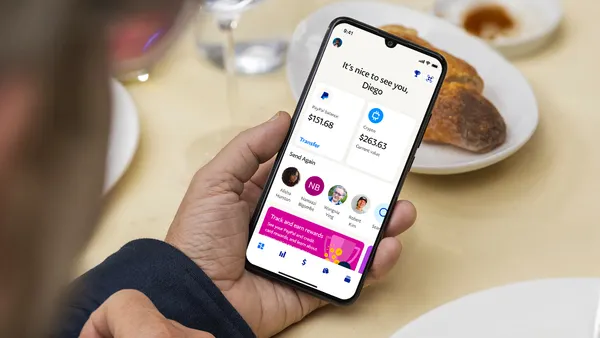Dive Brief:
- Global payments revenue growth is set to slow over the next four years, and North America is expected to record some of the smallest transaction-related revenue growth by region, according to a new report from Boston Consulting Group.
- North America’s annual transaction-related revenue growth is projected to be about 5.6% through 2029, higher only than Asia-Pacific (4.5%) and Western Europe (4.3%). By comparison, Latin America – fueled by real-time payment systems in Brazil – is expected to record 10.5% growth, Eastern Europe, 13%, and the Middle East and Africa, 9%, according to the firm’s 2025 Global Payments Report, released Sept. 22.
- “Payments growth in North America is slowing because the market is already so advanced,” said Inderpreet Batra, a New York-based managing director and senior partner at BCG, in an email. “The cash-to-card migration that fueled revenues for years has essentially peaked — today, less than 10% of consumer spending in the U.S. is still in cash.”
Dive Insight:
Payments revenue worldwide is expected to grow just 4% each year through 2029, compared to the 8.8% growth experienced annually since 2019. The 2024 total was $1.93 trillion, BCG said in the report.
Much of that growth will be driven by transaction revenue, “propelled by rising card use, instant payment adoption, and new ecosystems,” the report said, pointing to Apple’s move to allow third-party apps to access the iPhone’s near field communication chip as well as the scale of India’s Unified Payments Interface.
The shift from using cash to cards has been a long-term trend, propelled in part by the evolution of technology.
Slowing revenue growth in North America in particular is “a sharp contrast to just a few years ago,” said Batra, lead author of the report and head of the firm’s payments and fintech business globally.
In 2022, North America experienced a strong post-COVID-19 pandemic rebound, with payments revenues growing at over 7% annually and credit card volumes hitting record highs, he said. Robust consumer spending, particularly in e-commerce channels, and high interest margins buoyed that growth.
“The difference today underscores how quickly the region has shifted from a growth story to a profitability challenge,” Batra said.
“North America will continue to expand in absolute terms, but the opportunity here is less about chasing volume and more about creating value,” Batra said.
As payment processing has become commoditized, more companies are looking to value-added services and embedded finance to fuel growth and differentiate, BCG noted. Fintechs and vertical software firms are incorporating merchant onboarding, payout orchestration and real-time treasury services, encroaching on the territory of incumbents such as banks and some payment providers.
“The focus now is on embedding payments into software, scaling real-time account-to-account systems, and using AI to modernize infrastructure and unlock efficiency,” Batra said.
Meanwhile, the interest-rate boost that lifted revenues in 2022 and 2023 is fading, Batra said, leaving deposit margins flat. Non-transaction-related payments revenues soared during the high-interest rate era that began in 2022, but are now expected to slow, growing just 2% in North America and 1.6% in Europe through 2029, according to the report. That stands in contrast to an average of 14% annually over the past five years.
That type of revenue includes interest income related to deposits, overdrafts and revolving credit cards, fee income from card and current account maintenance, and value-added services, BCG said.
“Falling margins on processing payments will continue to compress returns, exerting pressure on profitability even as lower funding costs improve lending economics,” BCG said in the report.










